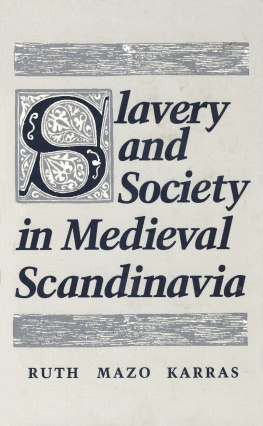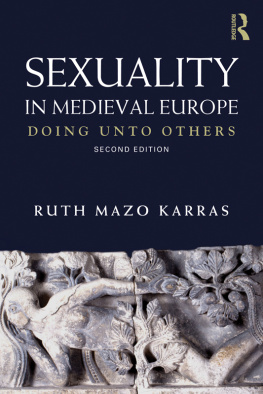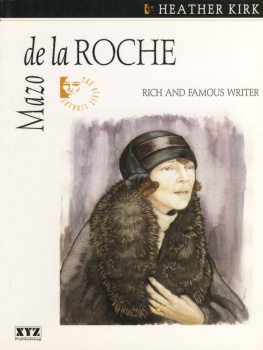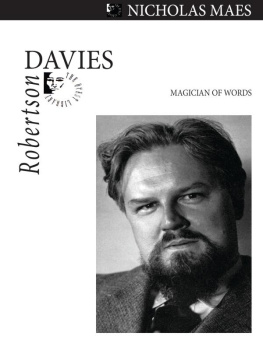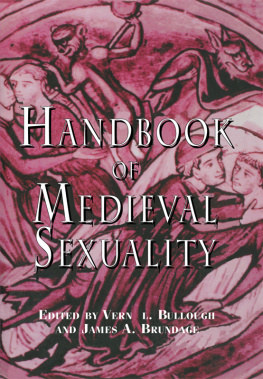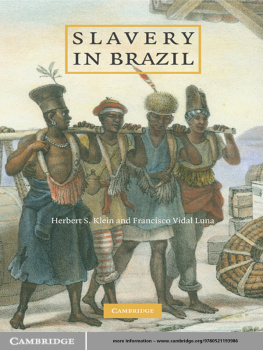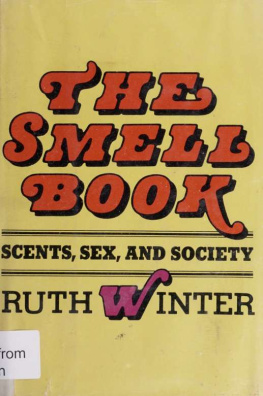Ruth Mazo Karras - Slavery and Society in Medieval Scandinavia
Here you can read online Ruth Mazo Karras - Slavery and Society in Medieval Scandinavia full text of the book (entire story) in english for free. Download pdf and epub, get meaning, cover and reviews about this ebook. year: 1988, publisher: Yale University Press New Haven and London, genre: History. Description of the work, (preface) as well as reviews are available. Best literature library LitArk.com created for fans of good reading and offers a wide selection of genres:
Romance novel
Science fiction
Adventure
Detective
Science
History
Home and family
Prose
Art
Politics
Computer
Non-fiction
Religion
Business
Children
Humor
Choose a favorite category and find really read worthwhile books. Enjoy immersion in the world of imagination, feel the emotions of the characters or learn something new for yourself, make an fascinating discovery.
- Book:Slavery and Society in Medieval Scandinavia
- Author:
- Publisher:Yale University Press New Haven and London
- Genre:
- Year:1988
- Rating:4 / 5
- Favourites:Add to favourites
- Your mark:
- 80
- 1
- 2
- 3
- 4
- 5
Slavery and Society in Medieval Scandinavia: summary, description and annotation
We offer to read an annotation, description, summary or preface (depends on what the author of the book "Slavery and Society in Medieval Scandinavia" wrote himself). If you haven't found the necessary information about the book — write in the comments, we will try to find it.
Slavery and Society in Medieval Scandinavia — read online for free the complete book (whole text) full work
Below is the text of the book, divided by pages. System saving the place of the last page read, allows you to conveniently read the book "Slavery and Society in Medieval Scandinavia" online for free, without having to search again every time where you left off. Put a bookmark, and you can go to the page where you finished reading at any time.
Font size:
Interval:
Bookmark:
Yale Historical Publications, 135
Slavery and Society in Medieval Scandinavia
RUTH MAZO KARRAS
Yale University Press New Haven and London
TO JOAN AND ROBERT MAZO
Published with assistance from the Kingsley Trust Association Publication Fund established by the Scroll and Key Society of Yale College.
Copyright 1988 by Yale University.
All rights reserved.
This book may not be reproduced, in whole or in part, including illustrations, in any form (beyond that copying permitted by Sections 107 and 108 of the U.S. Copyright Law and except by reviewers for the public press), without written permission from the publishers.
Designed by James J. Johnson and set in Trump type by the Composing Room of Michigan, Grand Rapids, Mich.
Printed in the United States of America by Edwards Brothers, Inc., Ann Arbor, Mich.
Library of Congress Cataloging-in-Publication Data Karras, Ruth Mazo, 1957
Slavery and society in medieval Scandinavia / Ruth Mazo Karras, p. cm. (Yale historical publications. Miscellany ; 135) Bibliography: p.
Includes index.
ISBN 0-300-04121-7 (alk. paper)
1. SlaveryScandinaviaHistory. 2. ScandinaviaSocial conditions. 3. SlaveryEuropeHistory. 4. EuropeSocial conditionsTo 1492. I. Series.
HT1211.K37 1988
306' ,362'o948dc19 87-32167
CIP
The paper in this book meets the guidelines for permanence and durability of the Committee on Production Guidelines for Book Longevity of the Council on Library Resources.
10 987554321
Preface ix
Introduction i
1 Slavery and Servitude in Medieval European Society 5
2 The Identity of the Slave in Scandinavia 40
3 The Slave in the Scandinavian Economies 69
4 The Legal Construction of the Slave 96
5 Slavery and Freedom 122
Conclusion 164
Appendix: Note on the Use of Sources 167
Abbreviations 185
Notes 189
Bibliography 259
Index 301
ix
The nature of this study makes terminology extremely important. Several assumptions, discussed in chapter 2, are involved in translating a word as "slave." In cases where the translation seems at all questionable I have indicated what word appears in the original.
Except as noted, all quotations are my own translations. Most of the exceptions are translations of poetry or of citations from either Saxo Grammaticus or the first half of the Icelandic law code Grgs, of which excellent translations exist. Where I have used published translations of these sources, it is noted. A list of English translations of Icelandic literature is provided in Donald K. Fry, Norse Sagas Translated into English (New York: AMS Press, 1980). In the case of Russian, Arabic, and Irish sources I have not consulted the original and cite only the translation used; I follow the translators' transliteration. Where secondary works are available in English translation I have used the translation; where they are available only in the original language all quotations are my own translation.
I have used the slenzk fornrt series for the texts of Icelandic family sagas, Heimskringla and Landnmabk. Though these texts are not critical editions, they are readily available for consultation and most modern translations are based on them. All references to sources are given by chapter or line number rather than page number (except in the case of short, undivided works) so that the text may be consulted in any edition or translation.
The Danish and Swedish law codes are not available in any English translation, and even the Old Danish and Old Swedish editions are not widely available. Any reader who wishes to consult in English translation any passages from these law codes cited here can order from University Microfilms a copy of my dissertation (Yale University, 1985). In the dissertation full quotations and translations of all cited legal passages appear in footnotes.
I have Anglicized Old Norse names to the extent of leaving off the -r of the nominative singular. Names of provinces are given in the modern
x
language of the appropriate country, with the exception of Jutland, whose name is well known in English.
This book has gone through several incarnations and many people have helped it to reach its present state. Research in Sweden was made possible by a research grant from the Thord-Gray Fund of the American-Scandinavian Foundation. Travel expenses and research in Denmark were covered by a grant from the Yale Consortium on International and Area Studies. While in Scandinavia I relied on the resources of the Kungliga Bibliothek, Stockholm; Uppsala Universitetsbibliothek; Riksarkivet, Stockholm (where Clara Nevus and Birgitta Fritz were particularly helpful); Kungliga Vitterhets Akademiens Bibliothek, Stockholm; and the Kongelige Bibliothek, Copenhagen. I had particularly stimulating and helpful conversations with Elsa Sjholm, the leading expert on the Swedish provincial law codes, and Thomas Lindkvist of Uppsala University, who was kind enough to read an entire draft of an early version of this work. I also benefited from conversations with Gran Dahlbck of the University of Stockholm, Olle Ferm and Sigurd Rahmqvist of the Riksantikvariembetet research project Det Medeltida Sverige, Peter Sawyer and Birgit Sawyer of Gteborg University, and Niels Lund of the University of Copenhagen.
To the codirectors of my doctoral dissertation, John Boswell and Jaroslav Pelikan, I am grateful for their helpful comments and encouragement. Other members of the Yale faculty who provided advice on various points include Paul Bushkovitch, David B. Davis, R. Emmett McLaughlin, Conrad Russell, Robert Stacey, and Robin Stacey. Seth Ward provided invaluable technical assistance in the production of the dissertation. David Pelteret of the University of Toronto also provided useful advice.
For help in the process of revision and rewriting I am extremely grateful to Edward Peters of the University of Pennsylvania. Other colleagues, including Lee Cassanelli, Robert Engs, Albert Lloyd, David Ludden, and Alexander Riasanovsky, were kind enough to answer questions or make suggestions on particular points. I also benefited from the comments of Jesse Byock of the University of California at Los Angeles. Jeff Mazo corrected my Icelandic spelling; any errors that remain are of course my responsibility.
Christopher Karras, in addition to providing the usual spousely emotional support and help with the production of the manuscript, also read the entire text at least three times and edited it extensively. Without him this book might never have been started, let alone finished.
1
Medieval Scandinavian slavery is relevant to a wider set of problems than those of Scandinavian society alone: the nature of freedom and unfreedom in medieval Europe in general, the relation of economic dependence to legal disability and social status, the reasons why a culture constructs a particular sort of identity for the people at the bottom of society. This book compares the four Norse-speaking countries, Norway, Iceland, Denmark, and Sweden, and considers the broad social and cultural context of slavery.
The existence of slavery in medieval Scandinavia comes as a surprise to many historians who are not medievalists and to many Scandinavians who are not historians, but it is not a new discovery.
It is self-evident, and not a thesis of this book, that Scandinavian "thralldom" is a form of slavery (by any of the definitions discussed in chapter 1). One purpose of the book is to better understand the institution by identifying it as slavery and not a unique institution. Some older authors may have chosen to retain the term thralldom to emphasize that the institution was different from New World slavery; perhaps some did not want to think of medieval Scandinavians as slaveholders. Reluctance to equate the "thrall" with a "slave" may be salutary in
Next pageFont size:
Interval:
Bookmark:
Similar books «Slavery and Society in Medieval Scandinavia»
Look at similar books to Slavery and Society in Medieval Scandinavia. We have selected literature similar in name and meaning in the hope of providing readers with more options to find new, interesting, not yet read works.
Discussion, reviews of the book Slavery and Society in Medieval Scandinavia and just readers' own opinions. Leave your comments, write what you think about the work, its meaning or the main characters. Specify what exactly you liked and what you didn't like, and why you think so.

